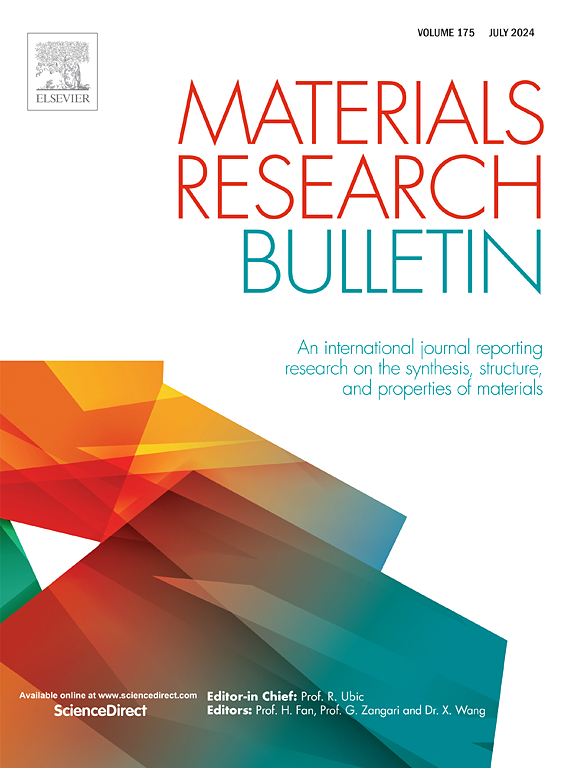Fabrication of Dy:GdVO4 single crystals and evaluation of scintillation performance
IF 5.7
3区 材料科学
Q2 MATERIALS SCIENCE, MULTIDISCIPLINARY
引用次数: 0
Abstract
Scintillators, which can rapidly transform high-energy photons of ionizing radiation into low-energy photons, are widely utilized for radiation detectors. In particular, scintillators with a slow decay time constant (several µs-order) commonly mounted on radiation detectors classified with current-type detectors. The commercial scintillators currently employed in current-type detectors, such as Tl:CsI and CdWO4 (CWO), are containing substance restricted by the RoHS2 directives or exhibiting hygroscopic property, respectively. Therefore, there is a need for new scintillators that can overcome these limitations. In light of this, Dy:GdVO4 single crystals were fabricated and evaluated their potential as scintillators in current-type detectors. Our results demonstrate that the light yield of the Dy:GdVO4 shows 50,000 photons/MeV, with the afterglow level of 4.3 ppm. Such performances are equal or better than those of CWO and Tl:CsI, suggesting that Dy: GdVO4 is a promising candidate for new scintillator in current-type detectors.
Dy:GdVO4单晶的制备及闪烁性能评价
闪烁体能将电离辐射中的高能光子迅速转化为低能光子,被广泛应用于辐射探测器中。特别是,通常安装在与电流型探测器分类的辐射探测器上的具有缓慢衰减时间常数(几μ s阶)的闪烁体。目前用于电流型探测器的商业闪烁体,如Tl:CsI和CdWO4 (CWO),分别含有受RoHS2指令限制的物质或具有吸湿性。因此,需要能够克服这些限制的新型闪烁体。为此,制备了Dy:GdVO4单晶,并对其在电流型探测器中作为闪烁体的潜力进行了评价。我们的研究结果表明,Dy:GdVO4的产光率为50,000光子/MeV,余辉水平为4.3 ppm。这些性能与CWO和Tl:CsI相当或更好,表明Dy: GdVO4是电流型探测器中新型闪烁体的有希望的候选者。
本文章由计算机程序翻译,如有差异,请以英文原文为准。
求助全文
约1分钟内获得全文
求助全文
来源期刊

Materials Research Bulletin
工程技术-材料科学:综合
CiteScore
9.80
自引率
5.60%
发文量
372
审稿时长
42 days
期刊介绍:
Materials Research Bulletin is an international journal reporting high-impact research on processing-structure-property relationships in functional materials and nanomaterials with interesting electronic, magnetic, optical, thermal, mechanical or catalytic properties. Papers purely on thermodynamics or theoretical calculations (e.g., density functional theory) do not fall within the scope of the journal unless they also demonstrate a clear link to physical properties. Topics covered include functional materials (e.g., dielectrics, pyroelectrics, piezoelectrics, ferroelectrics, relaxors, thermoelectrics, etc.); electrochemistry and solid-state ionics (e.g., photovoltaics, batteries, sensors, and fuel cells); nanomaterials, graphene, and nanocomposites; luminescence and photocatalysis; crystal-structure and defect-structure analysis; novel electronics; non-crystalline solids; flexible electronics; protein-material interactions; and polymeric ion-exchange membranes.
 求助内容:
求助内容: 应助结果提醒方式:
应助结果提醒方式:


